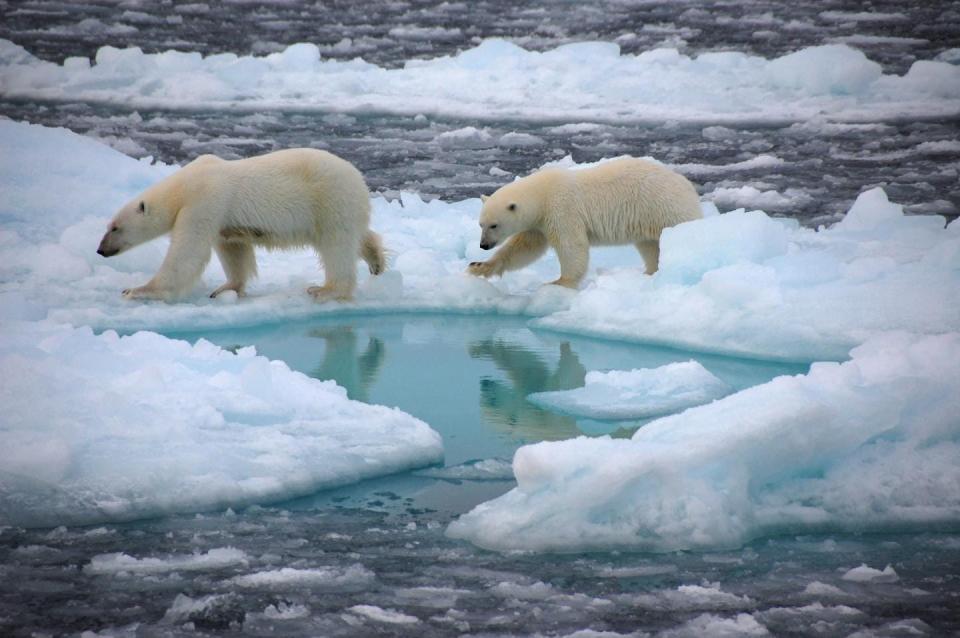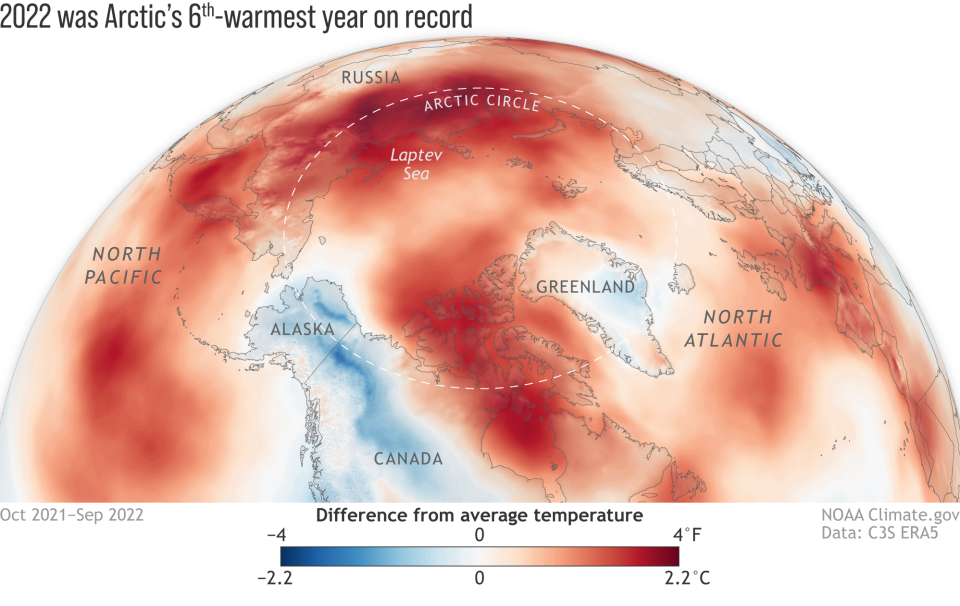The Arctic could be ice-free in the summer by the 2030s. What experts say it could mean.
Summer sea ice in the Arctic Ocean might be a thing of the past by the 2030s, no matter what we do to curb emissions of the greenhouse gases that cause global warming, an international study released Tuesday suggests.
In fact, an ice-free Arctic each September is likely already "baked" into Earth's climate system, according to study lead author Seung-Ki Min of the Pohang University of Science and Technology in South Korea.
"We found ice-free conditions will occur even in a low-emission scenario," Min told USA TODAY. Min and his co-authors used computer models to predict what will happen to the Arctic as the Earth's temperature rises over the next several decades.
The new study, published in the peer-reviewed British journal Nature Communications, adjusted the models, scaling them based on data collected year-round. The authors said their results show emissions are having "profound impacts" on the Arctic and that previous computer modeling studies have "significantly" underestimated the trend in sea ice decline in the region.
Fact check: Greenland still losing ice due to greenhouse gas emissions, experts say

What is sea ice? Why is it important?
Sea ice is frozen ocean water that melts each summer, then refreezes each winter. Sea ice in the Arctic has been declining for years, particularly during September, when it generally reaches its lowest coverage of the year. And previous international research projected it would be virtually ice-free by late in the century if higher greenhouse gas emissions continued unabated.
Arctic sea ice has been declining rapidly throughout all seasons in recent decades, and there has been an increased decline since 2000, the study said.
Sea ice affects Arctic communities and wildlife such as polar bears and walruses, and it helps regulate the planet’s temperature by influencing the circulation of the atmosphere and ocean.
Human impact on sea ice decline
The human impact on declining sea ice in the Arctic can be seen throughout the year and can be largely attributed to the increase in greenhouse gas emissions from the burning of oil, gas and coal. The contributions of aerosols and natural factors (such as solar and volcanic activity) were found to be much lower, according to the study.
The authors project that the Arctic may be sea-ice-free in September by 2030–2050 under all emission scenarios. This contrasts with previous assessments discussed in the sixth assessment report of the Intergovernmental Panel on Climate Change that did not project a future sea-ice-free Arctic in summer under low emissions.
Fact check: Arctic sea ice declining overall, though level varies by year and season
Will the Arctic be 'completely' ice-free by the 2030s?
Not quite. Scientists in the study say there will still be some summer sea ice left in parts of the Arctic Ocean. What scientists refer to as the first "ice-free" Arctic summer year will occur when the Arctic has less than 386,000 square miles of sea ice. (The thick ice sheets surrounding Canada’s Arctic islands are likely to remain for much longer, even in summer.)

How might an ice-free Arctic impact weather and climate patterns around the world?
Min told USA TODAY that an ice-free Arctic will "induce faster and stronger Arctic warming" and that "warming may increase extreme weather events."
"Based on recent studies, stronger Arctic warming ... is expected to induce changes in atmospheric circulations," he said. "For example, causing more fluctuations of jet streams in the Northern Hemisphere, potentially increasing chances of heat waves, wildfires, cold snaps and heavy rainfall events over the northern midlatitude lands, including North America, Europe and Asia."
Current collapse: Study warns critical ocean current is nearing 'collapse.' That would be a global disaster.
What does this mean for the people and animals who live in the Arctic?
Arctic indigenous communities will be affected because their hunting and traveling depend upon ice-free conditions, according to Min. He said animals that depend on sea ice will also be strongly affected: "As Arctic warming is enhanced, permafrost will also melt earlier and many species, including polar bears, walruses and reindeer, will have trouble surviving."
Would this open the Arctic for shipping and mining?
Yes, reduced sea ice will open the routes for ships and also favor the development of natural resources, Min said. This can be beneficial by reducing the shipping industry’s carbon footprint.
However, Arctic warming and melting permafrost can enhance the release of greenhouse gases into the atmosphere, further intensifying global warming.
Polar bear update: Canadian polar bears near 'Polar Bear Capital of the World' are dying at a rapid rate, survey says
What's happening in the Arctic now
The Arctic is warming three times faster than the rest of the planet, scientists say.
In fact, Arctic annual air temperatures from October 2021 to September 2022 were the sixth-warmest on record, which dates back to 1900, the National Oceanic and Atmospheric Administration said in its annual Arctic report card in December. Each of the last seven years in the Arctic has been among the seven warmest on record.
Although sea ice coverage in 2022 was higher than it had been, it was still much lower than the long-term average.
Open water developed near the North Pole for much of the summer in 2022, allowing polar-class tourist and research vessels easy access. The Northern Sea Route and the Northwest Passage were "largely open," the report card said
Satellite records show an increase in maritime shipping in the region as sea ice declines, and the "most significant increases" in travel are from the Pacific through the Bering Strait and Beaufort Sea, according to the report card.
Contributing: Dinah Voyles Pulver, USA TODAY
This article originally appeared on USA TODAY: Arctic sea ice: Ice-free in the summer by the 2030s, new study says

